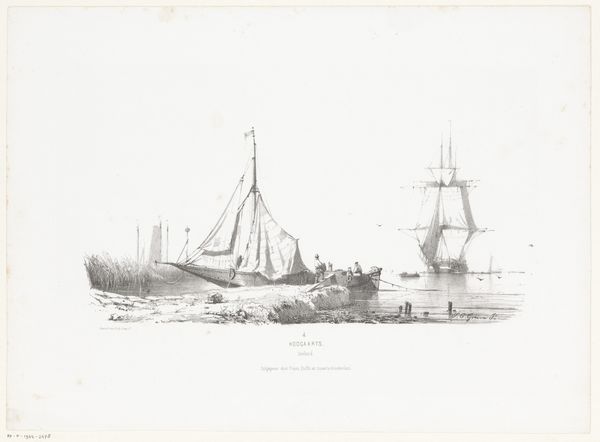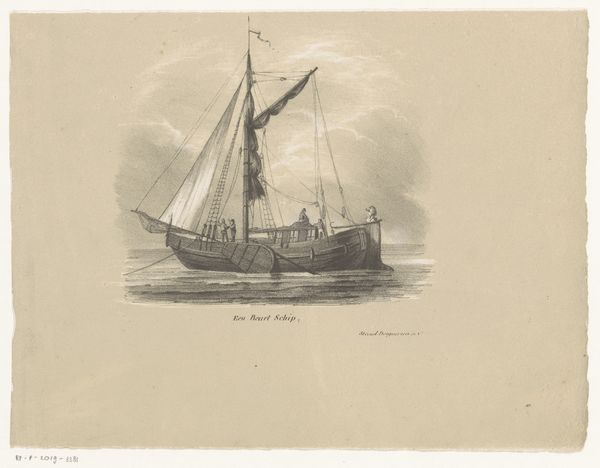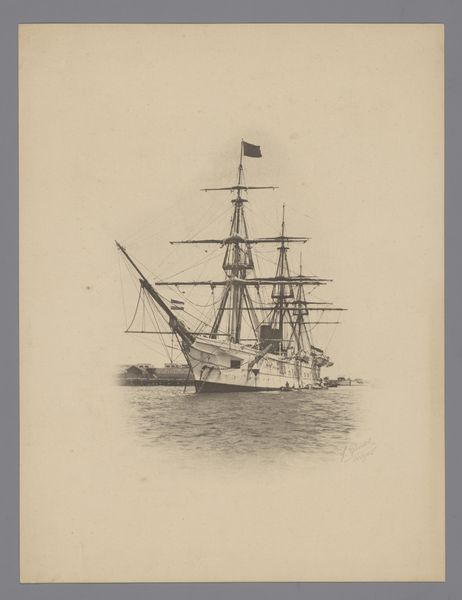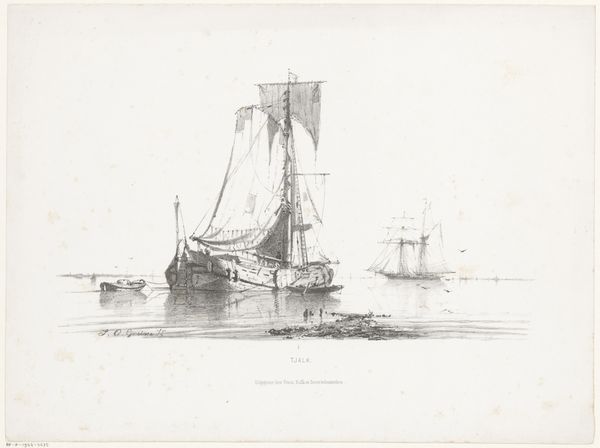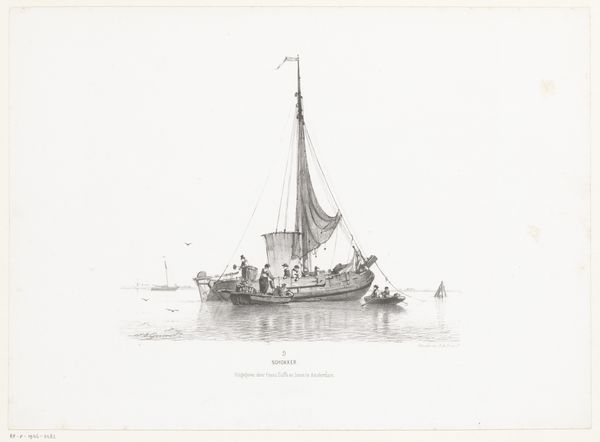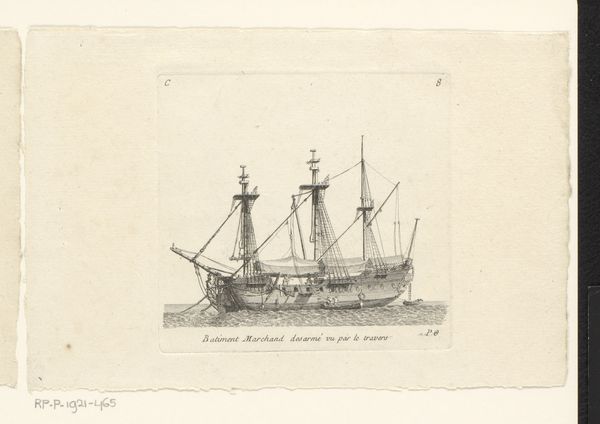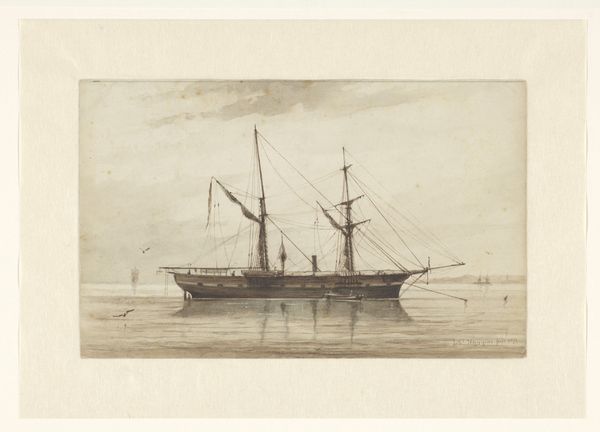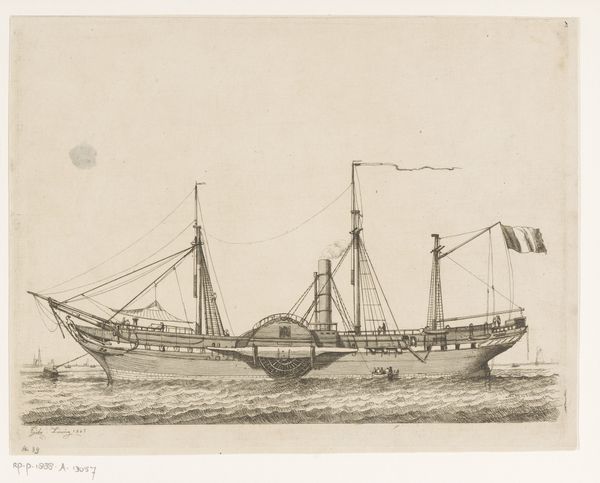
Dimensions: height 266 mm, width 368 mm
Copyright: Rijks Museum: Open Domain
Editor: Here we have "Turfschip," a pencil and print artwork by Johan Conrad Greive, dating back to around 1860. Looking at it, I’m struck by the tranquility – almost a hazy stillness hangs over the water. What do you see in this piece? Curator: It's interesting you pick up on that stillness. To me, it speaks volumes about 19th-century Romanticism’s fascination with nature's quiet power, right? Greive's technique here – that delicate pencil work and shading - adds to that sense of dreamy reflection, doesn't it? Imagine him there, capturing not just the scene, but the very feeling of the water, the light on the old boats. It is almost nostalgic. What is a boat if not nostalgia on water, an urge for things past. Editor: Nostalgia, that's it! It's like he's romanticizing this working boat, these ordinary people. Do you think that’s accurate? Curator: Absolutely! Remember, this was a time of massive industrial change. The Turfschip, a boat used for transporting peat, probably evoked simpler times, times past. Think of it this way: is he just drawing a boat, or is he drawing a memory? And for whom? Himself, perhaps, or for a city racing toward progress? And have a look at that sky! So much space left deliberately blank. Is it sky? Is it mist? A space for the soul to float up and away? Editor: It does invite the viewer to imagine, doesn’t it? It makes you consider life then, and how it’s perceived now, centuries later. It is definitely not just a boat. Curator: Not just a boat at all. Sometimes the simplest images hold the biggest stories, I suppose.
Comments
No comments
Be the first to comment and join the conversation on the ultimate creative platform.

